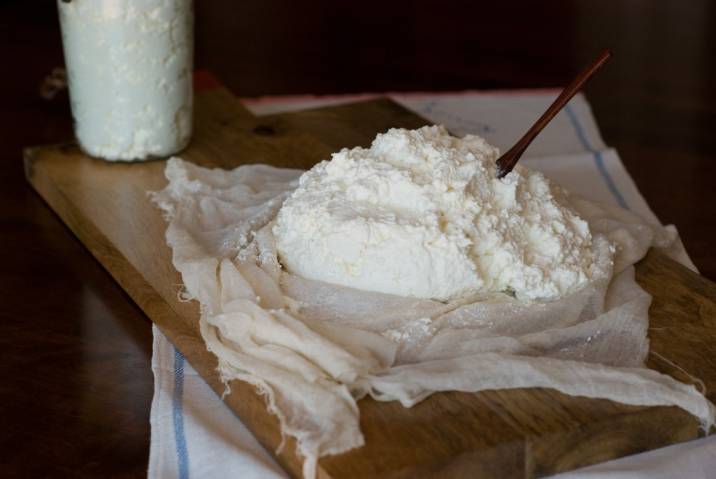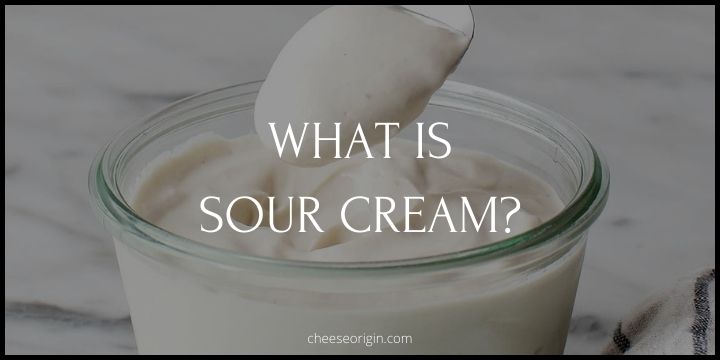What is Buttermilk Cheese? A Delicate Blend of Tanginess & Creaminess

Imagine a delicate blend of tanginess and creaminess that comes together to create a cheese that is as versatile as it is delicious. Not quite your classic cheddar or mozzarella, buttermilk cheese dances on the taste buds with its distinct flavor profile.
Quick Facts About Buttermilk Cheese
| Fact | Details |
|---|---|
| Origin | Buttermilk cheese is traditionally a homemade product, originating from various cultures worldwide. |
| Taste | It has a tangy, slightly acidic flavor, similar to Greek yogurt or sour cream. |
| Texture | The texture can range from creamy to crumbly, depending on the preparation method. |
| Color | It’s typically white but can vary depending on the type of milk used. |
| Milk Source | It’s made from buttermilk, a byproduct of butter-making, which can come from cow, goat, or sheep milk. |
| Fat Content | Lower in fat than many cheeses, due to being made from buttermilk. |
| Uses | It’s versatile and can be used in baking, cooking, or as a spread. |
| Health Benefits | High in protein and calcium, it also contains probiotics beneficial for gut health. |
| Shelf Life | It’s best consumed fresh but can last up to two weeks when properly stored in a refrigerator. |
| Making Process | The process involves heating buttermilk, adding an acid (like vinegar or lemon juice), and then straining the curds that form. |
| Variations | There are numerous variations globally, including Indian “paneer”, Eastern European “tvorog”, and Middle Eastern “labneh“. |
| Pairings | It pairs well with fruits, honey, bread, salads, and can be used in both sweet and savory dishes. |
What is Buttermilk Cheese?

Buttermilk cheese is a culinary delight that deserves a spot in every cheese aficionado’s repertoire. This unique dairy product, born from the marriage of tradition and ingenuity, boasts a flavor profile that’s tangy, slightly acidic, and reminiscent of yogurt or sour cream. It’s a testament to the wonders of cheesemaking, showing how simple ingredients – buttermilk, heat, and an acid – can create something truly special.
Originating as a homemade staple across various cultures worldwide, buttermilk cheese has carved its niche in the global culinary scene. Its texture varies from creamy to crumbly, mirroring its versatile nature. Whether spread on a warm piece of bread, crumbled over a salad, or used in baking, this cheese is sure to add a unique twist to your dishes.
One of the appealing features of buttermilk cheese is its health benefits. It’s a protein powerhouse, packed with calcium and probiotics that are good for gut health. Plus, it’s lower in fat than many cheeses, making it a guilt-free indulgence for those watching their calorie intake.
Buttermilk cheese is more than just a dairy product; it’s a celebration of flavor and culture. It’s a testament to the magic that happens when simplicity meets culinary craftsmanship. From the Indian ‘paneer‘, to the Eastern European ‘tvorog‘, and the Middle Eastern ‘labneh‘, the variations of buttermilk cheese around the world are as diverse as they are delicious.
What Does Buttermilk Cheese Taste Like?
Buttermilk cheese carries a mild, tangy taste that is similar to yogurt or sour cream. Unlike some cheeses that can be overpoweringly rich, buttermilk cheese offers a lighter, slightly acidic flavor that makes it versatile in both sweet and savory dishes.
The taste can slightly vary depending on the type of milk used and the preparation method. Some variations might have a more pronounced tanginess while others may lean towards a creamier, milder flavor. Despite these variations, the core essence of buttermilk cheese remains – a delightful balance of tartness and creaminess that tantalizes the palate.
Its unique taste makes it an excellent choice for those seeking a less intense, yet flavorful alternative to traditional cheeses. Whether paired with fruits, drizzled with honey, or incorporated into your favorite recipes, buttermilk cheese imparts a delightful tang that can elevate your culinary experience.
Buttermilk Cheese Tasting Notes
- Appearance: Buttermilk cheese typically presents a soft, creamy white color. Its appearance may vary from glossy when fresh to slightly matte as it ages. Depending on the preparation method, it can come in various shapes and sizes.
- Aroma: The aroma of buttermilk cheese is fresh and mild, akin to yogurt or buttermilk. A subtle hint of creaminess can be detected, along with a faint tangy note that teases the senses.
- Texture: The texture of buttermilk cheese ranges from smooth and creamy to slightly crumbly. This depends on how it’s made and its level of freshness. It’s light on the palate and doesn’t have the heaviness associated with some rich cheeses.
- Taste: The taste of buttermilk cheese is a delightful balance of tangy and creamy. The tanginess is mild and refreshing, not overpowering, providing a pleasant contrast to the underlying creaminess. This unique flavor profile makes it suitable for both sweet and savory dishes.
- Aftertaste: The aftertaste of buttermilk cheese is clean and refreshing. The initial tanginess gives way to a lingering creaminess, leaving a pleasant, mildly tart note on the palate.
How to Eat Buttermilk Cheese?
- Cheese Board: Include buttermilk cheese in your cheese board. Its mild tangy flavor contrasts nicely with stronger cheeses and complements fruits, nuts, and honey.
- Breakfast Spread: Spread buttermilk cheese on toast or bagels for a tangy start to your day. Top it with smoked salmon or fresh berries for added flavor.
- Salad Topping: Crumble buttermilk cheese over salads. The creamy, tangy notes add a delightful contrast to fresh greens and vinaigrette dressings.
- Baking Ingredient: Use buttermilk cheese in your baking. It can be a great addition to savory muffins, scones, or bread, adding a unique tangy twist to your baked goods.
- Dessert Component: Incorporate buttermilk cheese into desserts. Mix it into cheesecake batter for a lighter, tangier version of the traditional dessert, or use it as a filling for crepes along with some fruit compote.
- Pasta Sauce Base: Melt buttermilk cheese into your pasta sauce. It adds a creamy, tangy depth that pairs well with both vegetable and meat-based sauces.
- Grilled Cheese Sandwich: Use buttermilk cheese in your grilled cheese sandwich for a tangy change. Its creamy texture when melted makes for an indulgent sandwich filling.
- Pizza Topping: Sprinkle chunks of buttermilk cheese on pizza before baking. It will add a tangy, creamy element to your homemade pizza, making it even more delicious.
- Pair with Wine: Enjoy buttermilk cheese with a glass of wine. Light white wines such as Sauvignon Blanc or Pinot Grigio complement its tangy flavor, making for a perfect cheese and wine pairing.
10 Best Buttermilk Cheese Substitutes
| Substitute | Flavor Profile | Texture | Best Used In |
|---|---|---|---|
| Mild Cheddar | Mild, slightly tangy flavor, less sharp than mature cheddar | Firm and crumbly | Sandwiches, cheese platters, melted on top of dishes |
| Colby | Mild, creamy flavor similar to Longhorn | Semi-hard, elastic | Sandwiches, burgers, salads |
| Monterey Jack | Mild, buttery flavor with a slight tartness | Smooth, creamy | Melting in dishes like nachos, quesadillas, casseroles |
| Gouda | Slightly sweet, creamy flavor | Semi-hard, dense | Grilled cheese sandwiches, mac and cheese, cheese platters |
| Havarti | Mild, slightly tangy flavor with hints of butter | Semi-soft, creamy | Sandwiches, cheese boards, melted on dishes |
| Muenster | Mild, smooth flavor with a slight tanginess | Semi-soft, smooth | Grilled cheese sandwiches, mac and cheese, cheeseburgers |
| Provolone | Mild to sharp flavor depending on aging | Semi-hard, smooth | Sandwiches, pizza, pasta dishes |
| Edam | Mild, slightly nutty flavor | Semi-hard, smooth | Cheese platters, sandwiches, salads |
| American Cheese | Mild, creamy flavor, less tangy than Longhorn | Soft, creamy | Burgers, sandwiches, melting in various dishes |
| Feta | Tangy and slightly salty flavor | Crumbly, yet creamy when eaten | Salads, especially Greek salad, and Mediterranean dishes |
What Pairs Well With Buttermilk Cheese?
Food that goes well with Buttermilk Cheese:
| Category | Food Pairings with Buttermilk Cheese |
|---|---|
| Bread/Biscuits | Whole Wheat Bread, Bagels, Rye Crackers, Brioche |
| Fruits | Apples, Grapes, Peaches, Blueberries |
| Meats | Turkey, Ham, Roast Beef, Grilled Chicken |
| Vegetables | Cucumbers, Bell Peppers, Carrots, Grilled Asparagus |
| Nuts & Seeds | Pecans, Almonds, Pumpkin Seeds, Flax Seeds |
| Condiments & Spreads | Honey, Raspberry Jam, Apple Butter, Olive Tapenade |
| Desserts | Fruit Tarts, Cheesecake, Crepes, Chocolate Mousse |
| Seafood | Smoked Salmon, Grilled Shrimp, Crab Cakes, Clam Chowder |
| Pasta & Grains | Fettuccine Alfredo, Macaroni and Cheese, Quinoa Salad, Couscous |
| Herbs & Spices | Dill, Thyme, Parsley, Black Pepper |
Also read: 11 Best Crackers that Pair Well with Cheese
Beverage that goes well with Buttermilk Cheese:
| Category | Beverage Pairings with Buttermilk Cheese |
|---|---|
| White Wine | Sauvignon Blanc, Pinot Grigio, Chardonnay |
| Red Wine | Pinot Noir, Merlot, Zinfandel |
| Beer | Wheat Beer, Pale Ale, Lager |
| Non-Alcoholic | Sparkling Water, Lemonade, Peach Iced Tea |
| Spirits | Whiskey, Brandy, Vodka |
| Dessert Wine | Moscato, Port, Ice Wine |
| Cider | Dry Apple Cider, Pear Cider, Berry Cider |
| Coffee/Tea | Black Coffee, Earl Grey Tea, Green Tea |
| Fruit Juice | Apple Juice, Grapefruit Juice, Cranberry Juice |
Also read: Best Wine and Cheese Pairings: The Ultimate Guide
Also read:
- What is Whipped Cream? A Fluffy Delight in Every Spoonful
- What is Greek Yogurt? More Than Just a Dairy Product
- What is Crème Fraîche? Unpacking the French Culinary Staple
- What is Aged Cheddar? The Cheese That Stands the Test of Time
- What is Mizithra? Greece’s Gift to the Cheese World
- What is Goat Brie? A Unique Twist on a Classic Cheese
- What is Cambozola? Germany’s Unique Hybrid Cheese





